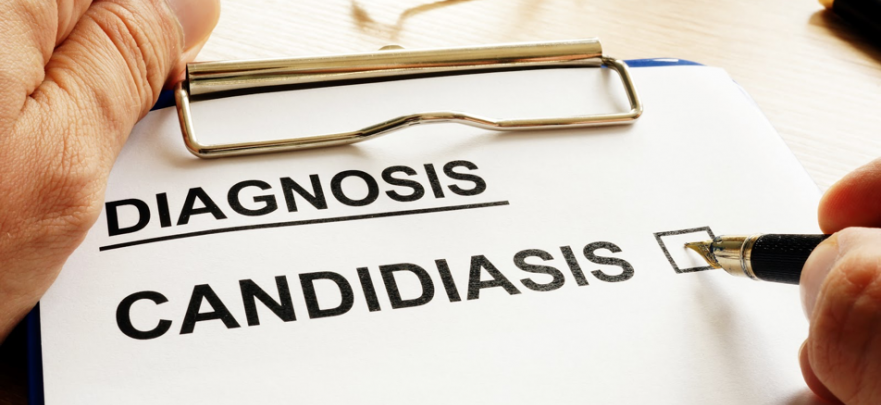Candida: What It Is, Overgrowth, and How to Get Rid of It
Candida is a fungus from the family of yeasts. Typically, Candida lives in small amounts in the mouth, intestines, and on the skin, and is not problematic. But when it grows uncontrollably, it can cause an infection known as candidiasis. Candida is the most common cause of fungal infections.
Under normal circumstances, healthy bacteria in your body keep Candida under control. But when the healthy bacteria levels drop, or the immune system is compromised, Candida spreads.
Common triggers for Candida overgrowth:
-
Taking antibiotics
-
Diet high in sugars, dairy, or processed carbs
-
High alcohol intake
-
A weakened immune system
-
Oral contraceptives
-
Diabetes
-
High stress
When Candida overgrowth begins, it can lead to various health problems. Here are some symptoms of Candida overgrowth and how to treat it:
Oral Thrush
Thrush occurs when candidiasis develops in the mouth or throat. It is common in newborns, older people, and individuals with weakened immune systems. Wearing removable dentures or poor oral hygiene increases the risk. The visible signs of oral thrush are white, bumpy patches on the tongue, inner cheeks, gums, tonsils, or throat. Thrush can be painful, and slight bleeding from the sores can occur.
Fatigue
The more common symptom associated with candidiasis is fatigue. Candida may not be the direct cause of fatigue, but there are ways in which it could contribute to it. Nutritional deficiencies such as vitamin B6, essential fatty acids, and magnesium are associated with candidiasis. Additionally, most infections occur when the immune system is compromised and weakened. Having a weakened immune system will cause fatigue.
Genital or Urinary Tract Infections
Candida is found in the vaginal tract of most women. Overproduction can lead to candidiasis of the vagina, more commonly known as a yeast infection. It can happen to men as well but is far less common. Candida overgrowth can also cause a urinary tract infection (UTI), although it is much less common.
Digestive Issues
A healthy digestive system relies on the balance of good and bad bacteria that live in your gut.
When a bacterial imbalance occurs, you can experience digestive issues, including constipation, diarrhea, nausea, gas, cramps, and bloating. Candida overgrowth may also be associated with several intestinal diseases such as ulcerative colitis and Crohn’s disease.
Sinus Infections
Candida fungal infections have been linked to a high percentage of sinus infections. Symptoms include a runny nose, nasal congestion, loss of smell, and headaches. Short-term sinus infections are typically bacteria, but the longer-term, more chronic sinus infections are typically fungal. Antibiotics treat bacterial sinus infections but may make a fungal sinus infection worse.
Skin and Nail Fungal Infections
We all have bacteria on our skin that prevent Candida from growing uncontrollably. Any change in the environment on our skin can cause an overproduction. Soaps, cosmetics, moisturizers, and antibacterial products can cause such changes. Candidiasis of the skin can affect any part of the body, but the areas that are warm and moist are particularly prone to infection. Symptoms are itching and a visible rash. Common conditions are athlete’s foot, ringworm, and toenail fungus.
Joint Pain
Candida infection can affect the joints and cause arthritis if it enters the bloodstream. Usually, this only happens after surgery or if candidiasis is left untreated for a long time.
The most commonly infected joints are hips and knees with associated symptoms like joint pain, stiffness, and swelling. If severe enough and left untreated, candidiasis can also cause bone infections or osteomyelitis. Although it is not very common, if it occurs, it can be tough to treat.
How to Treat Candida
There are a few proven ways to treat and prevent Candida from overgrowing and becoming an infection. Food plays a vital role in maintaining the balance of bacteria in your gut.
Refined sugars, high carb intake, and high dairy intake can encourage Candida and other harmful microorganisms to grow. Consuming too many of these foods can promote infection and suppress your immune system, which only accelerates growth and infection. Of course, there are plenty of foods that will help increase good bacteria and inhibit the growth of Candida.
These foods will help fight Candida infections:
-
Garlic, which contains allicin, an antifungal substance
-
Oregano or oregano oil
-
Coconut oil, which is high in lauric acid, and caprylic acid
-
Curcumin, which reduces or may kill Candida yeasts
-
Xylitol, which decreases Candida’s ability to adhere to a surface and cause infection
-
Aloe vera, which may inhibit Candida in the mouth
-
Pomegranate, which contains plant compounds to fight against Candida yeasts
-
Probiotics: Lactobacillus may reduce Candida growth and protect against infections






